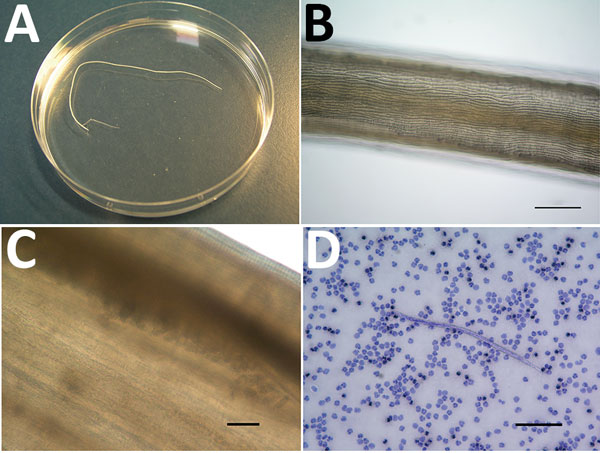Volume 24, Number 9—September 2018
Research Letter
Dirofilaria repens Nematode Infection with Microfilaremia in Traveler Returning to Belgium from Senegal
Figure

Figure. Dirofilaria repens adult worm isolated from the right conjunctiva of a 76-year-old man who returned to Belgium from Senegal, and microfilaria detected by using the Knott test. A) Macroscopic image of the adult. B) Microscopic image of the adult cuticle, showing the typical longitudinal ridges. Scale bar indicates 200 μm. C) Eggs in utero, indicating that the adult is a gravid female worm. Scale bar indicates 50 μm. Panel C has been cropped and contrast was increased to improve visibility of eggs. D) Microfilaria found in the blood of the patient. In a Knott test, microfilariae usually appear stretched out and slightly longer than those observed in a Giemsa-stained blood film. Scale bar indicates 100 μm.
Page created: August 17, 2018
Page updated: August 17, 2018
Page reviewed: August 17, 2018
The conclusions, findings, and opinions expressed by authors contributing to this journal do not necessarily reflect the official position of the U.S. Department of Health and Human Services, the Public Health Service, the Centers for Disease Control and Prevention, or the authors' affiliated institutions. Use of trade names is for identification only and does not imply endorsement by any of the groups named above.